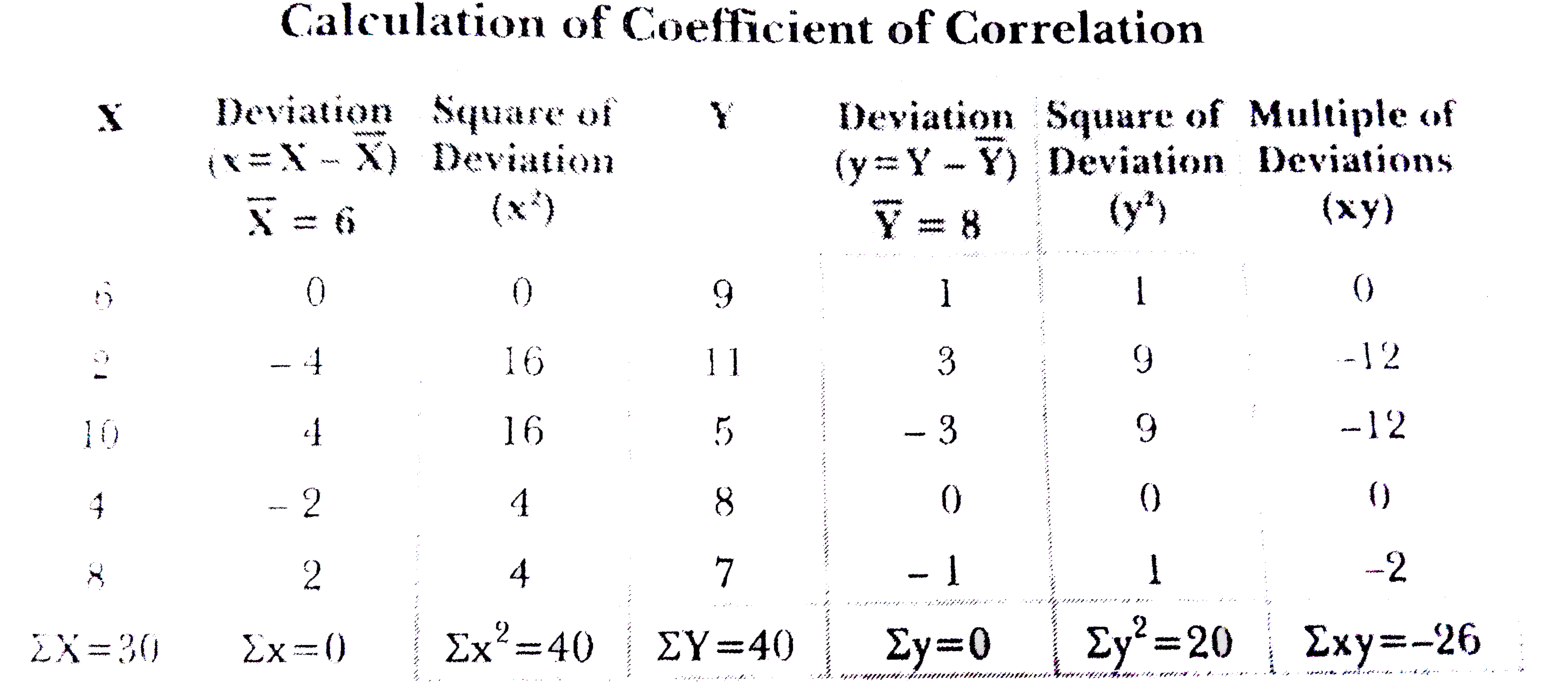Saved Bookmarks
| 1. |
From the following table, calculate the coefficient of correlation by Karl Pearson's method: Arithmetic means of X and Y series are 6 and 8 respectively. |
|
Answer» Solution :Let us first and MISSING value of Y and let us denote it by a . `bar(Y)=(sumY)/(N)=(9+11+a+8+7)/(5)=(35+a)/(5)` `implies 8=(35+a)/(5)` `:. 35+a=40` `implies a=5` Thus, the complete SERIES is :  Now we find the coefficient of correlation.  `R=(sumxy)/(sqrt(SUMX^(2)xxsumy^(2)))` The table shows that ` sumxy=-26,sum x^(2)=40,sumy^(2)=20` Substituting the values, we get `r=(-26)/(sqrt(10xx20))` `=(-26)/(sqrt(800))=(-26)/(28.28)` `=-0.92` Coefficient of Correlation (r)= -0.92 |
|
Discussion
No Comment Found
Related InterviewSolutions
- Assumption of ordinal apporch
- Critical appraisal of methods of collection of data
- Different between microeconomics and macroeconomics
- What happense when ic slops downwards
- Implications of perfect competition in forms of market
- If price of mango rises demand will ?
- What is statistical table? Explain briefly tha main characteristics of a good statistical table.
- What is production possibility curve
- Explain any three factor which affect the supply of a commodity
- What do you understand by the increasing returns to scale